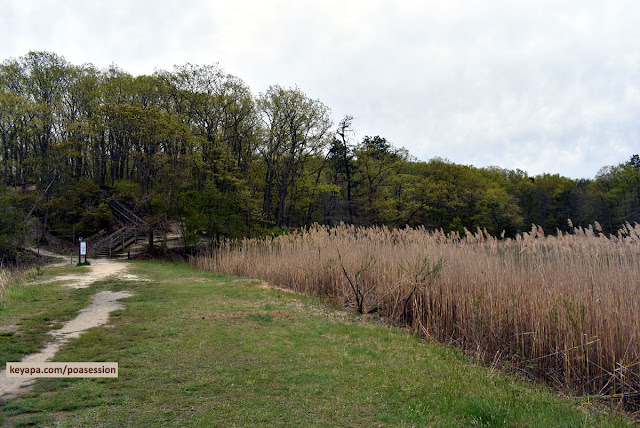I know that P. australis is an aggressive invasive that has displaced native plants and spread unchecked throughout the country.
But this grass still forms impressive stands, and their dried inflorescence look quite enchanting to most casual observers.
 |
| Dense stands of P. australis look bi-colored due to new green growth at lower end. New growth also in right foreground. |
We hiked Cheesequake State Park in New Jersey, and it was interesting to see the new growth of this species rising out of the tall light brown remnants of the grass from last year.
The new growth was dwarfed by the much taller dried grass, but its vibrant green coloration made it stand out anyways. In fact, when looking at a monoculture of P. australis from the side, the difference in color made it seem as if the grass was bi-colored, with a green lower half and a light brown top!
 |
| P. australis is abundant in the park |
The park itself was very well-maintained, with well-marked paths and even long wooden boardwalks that allowed you to traverse the boggy low-lying ground that occupied parts of the park.
P. australis grows abundantly in the lower and marshy areas, and forms dense impenetrable stands along the sides of paths and around some of the park lakes and ponds. It is however absent from the higher areas of the park, as well as directly below the shaded tree canopy.
I can only surmise that eradicating the invasive grass from the park would have cost too much, though it might be a small consolation to park managers that visitors probably found the dense stands of grass an impressive sight.
 |
| New green growth rises under the shadow of last year's dried remnants |

No comments:
Post a Comment